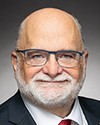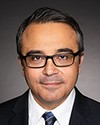We've actually set up a virtual assistance program.
I'm going to go back a little bit to what my colleague from Ornge was talking about, as well. We have a modular capacity—so a small capacity—to deploy not full field hospitals but a smaller capacity. We've been getting a lot of requests around providing additional equipment as well so that communities that are isolated can set up quarantine structures. That's not medical stuff; it's basic blankets, cots, and so on.
I think one of the biggest areas we're looking at is training and advice. There was a big concern, of course, at the beginning of COVID. We got a lot of requests to deploy full equipment in case something were to happen. Where we're getting a lot of questions is around deploying expertise, people who have experience in helping the communities set up, accompanying the community in terms of how to set up properly, and providing ongoing training. Ongoing training is a big area.
To refer to a previous question for all organizations, we have purchased, with the support of the federal government, some PPE for community-based organizations—and first nations fall into that, as well—in the form of kits that will be available for the next few months. We have enough kits for 5,000 organizations, and we want to increase that quite a bit.
We've set up a 24-hour call centre for first nations communities in five different languages to answer, basically, all the requests and to direct people to the right place for all the types of supports. There's a lot of effort in terms of training, ongoing training and building local capacity. In any situation, such as an emergency, the first response happens locally. We need to send in specialized teams after that, but it's first about how we can build local capacity.




